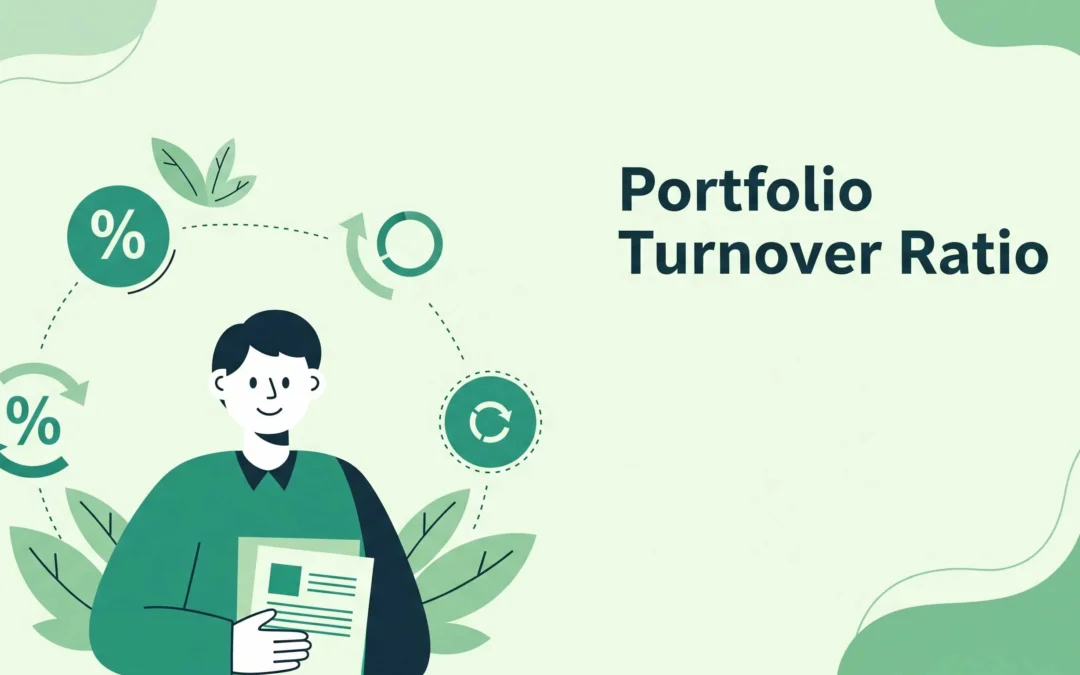Financial ratios are a representation of a company’s financial health. They represent the ability of a company to meet its liquidation needs, generate returns, etc. However, the portfolio turnover ratio (PTR) is often ignored by the investor, even though they are of great importance. Many investors don’t even know the meaning of this ratio.
This article will help you understand the meaning of portfolio turnover ratio, along with its use for investors. Even if you have questions regarding how to evaluate this ratio, this article will help.
What Is Portfolio Turnover Ratio?
One important indicator that shows how frequently the assets in a mutual fund are purchased and sold over the course of a year is the Portfolio Turnover Ratio (PTR). Whether a fund manager actively reshuffles investments or prefers to hold them for an extended period of time, it helps investors understand their trading strategy.
Even though it isn’t talked about as much as returns or expense ratios, this metric is crucial for assessing fund efficiency, cost impact, and tax implications.
Key Features:
- Measures the activity of the fund: This reflects the frequency at which securities are replaced in a year.
- Shows Investment style: buy-and-hold strategy = low PTR; active trading = high PTR.
- Cost-impacting: Increased turnover frequently translates into higher transaction costs.
- Beneficial for investor alignment: Aids in coordinating fund behaviour with individual investment objectives.
Portfolio Turnover Ratio (PTR) = (Total purchases or sales during a year (whichever is less) / Average AUM) × 100
Example: If a mutual fund with an average annual total of Rs. 400 crore purchases and sells securities valued at Rs. 200 crore and Rs. 150 crore, respectively, during the year:
- Rs. 150 crore is the lesser of the two.
- Then portfolio turnover ratio is (150 / 400) × 100 = 37.5%.
Why Portfolio Turnover Ratio Matters to Investors?
Let us look at how the turnover ratio is important to investors:
1. Affects transaction costs and expenses
- More frequent buying and selling, which results in broking, STT, and stamp duty, is implied by higher turnover.
- These expenses lower returns, even though they are not visible in the expense ratio.
2. Implications for Taxes
- A 15% Short-Term Capital Gains (STCG) tax is applied to assets sold within a year.
- Particularly in equity funds, a high PTR raises taxable events.
3. Shows the Style of the Fund Manager
- Low PTR (less than 30%): shows a steady, long-term approach, which is perfect for cautious investors.
- Moderate PTR (30%–70%): Selective rebalancing combined with a balanced approach.
- High PTR (>70%): Aggressive approach focused on immediate opportunities.
4. Aids in Comparing Funds
- The turnover of two funds with comparable returns may vary.
- The one with a lower PTR might be more effective since it offers comparable returns at a lower risk and expense.
How to evaluate the Turnover Ratio?
After understanding the meaning of PTR, let us see how to evaluate this ratio and draw a conclusion:
1. Match the Fund Goal with the Turnover Ratio
The fund’s investment philosophy should be reflected in the turnover ratio:
| Fund Type | Expected Turnover Range | Importance |
| Index Funds / Passive Funds | 0% – 10% | Mirror the market, minimal changes, cost-efficient |
| Large-Cap Equity Funds | 10% – 40% | Long-term stability with some rebalancing |
| Flexi / Mid / Small-Cap | 30% – 70% | Dynamic allocations based on market shifts |
| Thematic / Sectoral Funds | 70% – 150%+ | Tactical plays, high responsiveness to trends |
2. When a Low Turnover Ratio Is a Good Sign
Generally speaking, a low PTR (below 30%) is preferred when:
- You are a long-term investor who prioritises building wealth.
- You desire reduced hidden expenses (STT, trading fees).
- You favour portfolios that are steady and rarely rearranged.
- You avoid frequent short-term capital gains in order to maximise tax efficiency.
3. A High Turnover Ratio Isn’t Always a Bad Thing
A PTR above 70% is not always a bad thing. It might suggest:
- A proactive fund manager who adjusts strategy in response to market movements.
- A tactic intended to take advantage of transient opportunities.
- There are active themes or sectors that require frequent rebalancing.
This look could work well for:
- High-risk investors are looking for quicker profits.
- Market-savvy people who are aware of sector and macro trends.
- Investment objectives for the short to medium term.
4. Analyse Other Metrics along with PTR
It takes more than one factor to evaluate a turnover ratio well. Examine it using:
- Expense Ratio: Expensive fund = high turnover + high expense.
- Alpha/Beta: Does the high turnover create alpha, or is it misleading?
- Past Performance: Are steady profits being made without engaging in excessive trading?
Bottomline
The conclusion can be drawn that PTR cannot be ignored and has equal importance. They represent how actively an investor is trading. If the ratio is high, i.e., around 70% then the investor is considered to be aggressive, who readily grabs the opportunity available. Investors’ style of trading is reflected by the same, for example, if the ratio is below 30% then the goal may be to build wealth.
However, one single ratio cannot determine anything with clarity, and it is advised to use other elements as well for better judgment.


